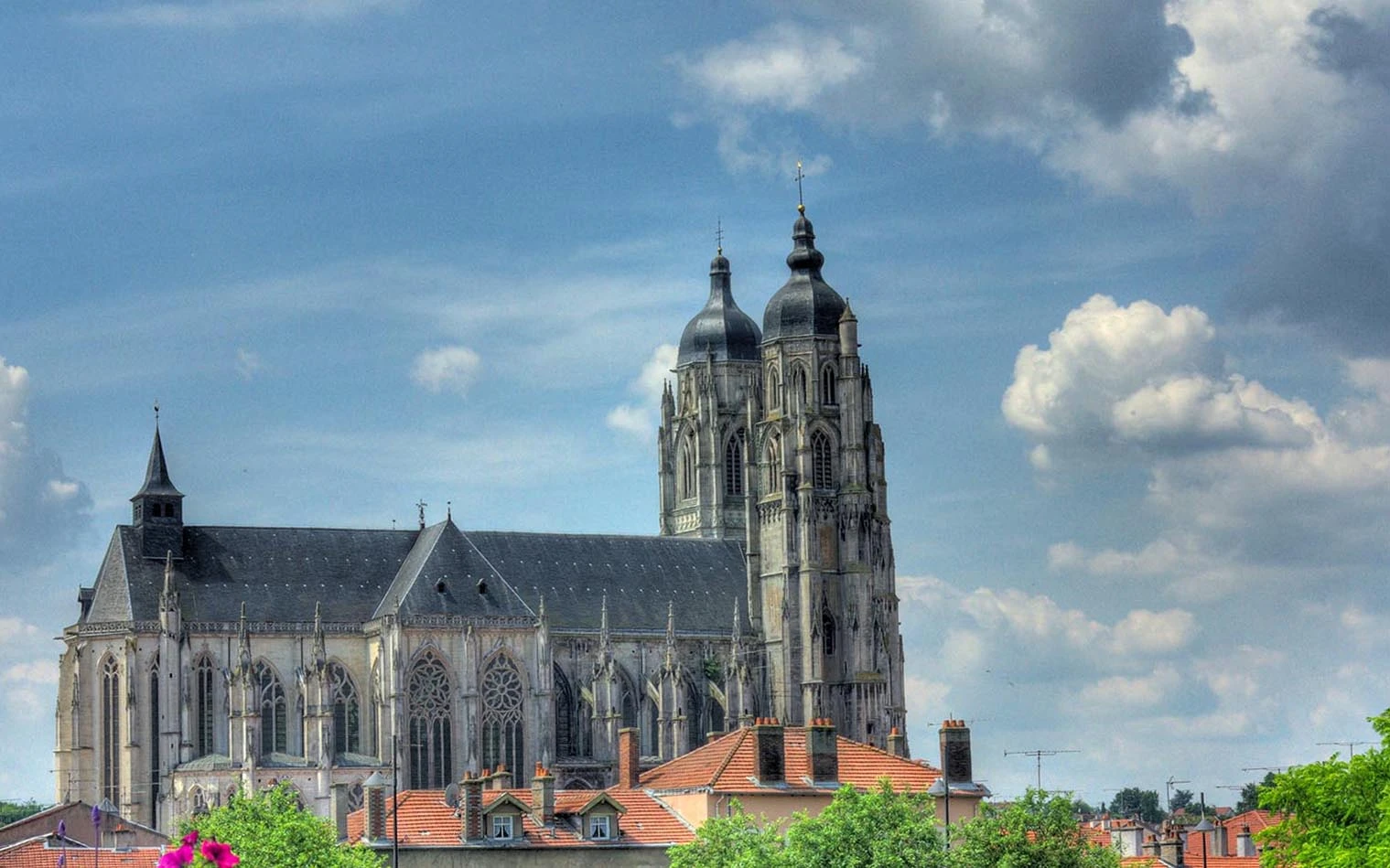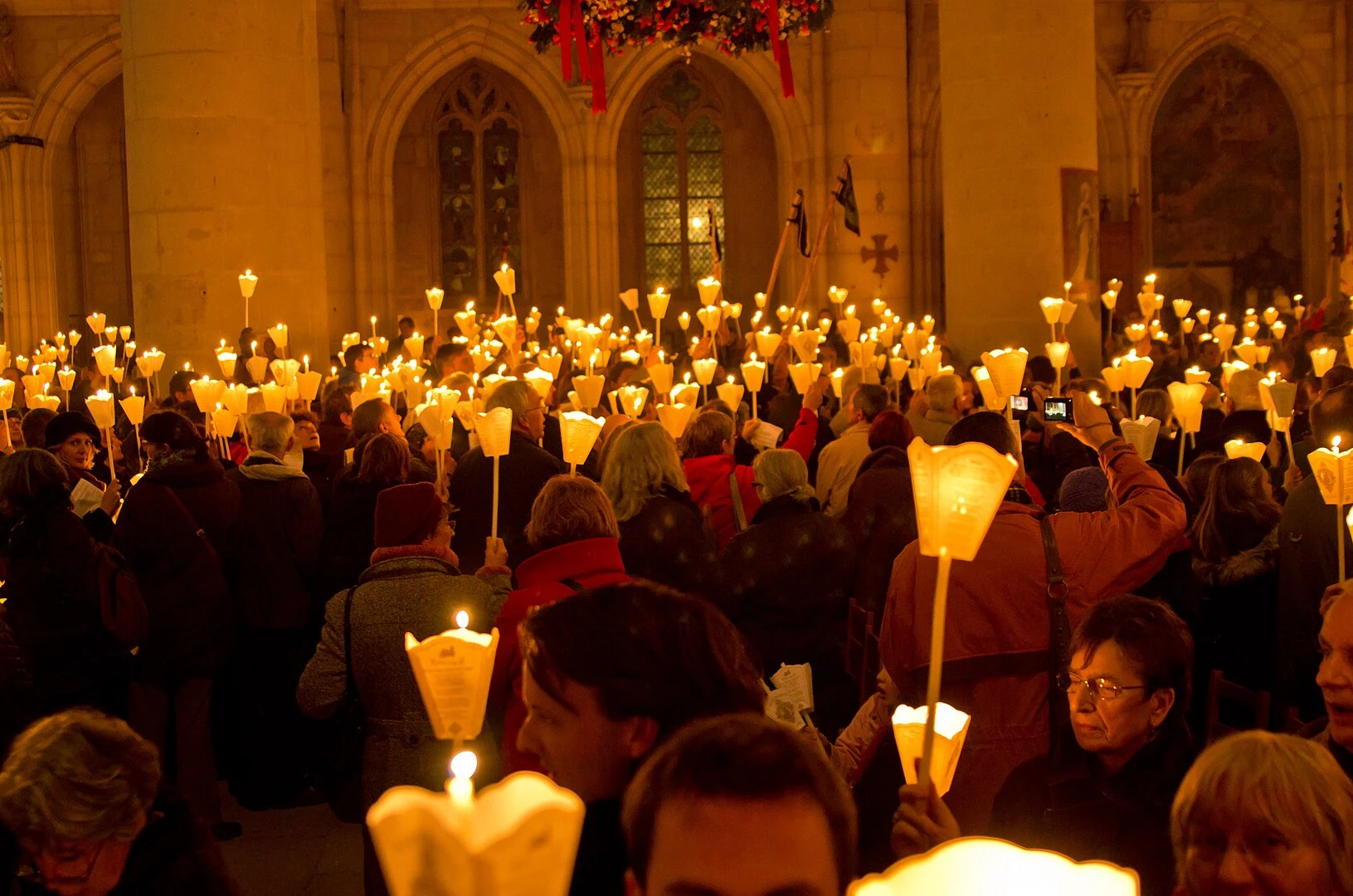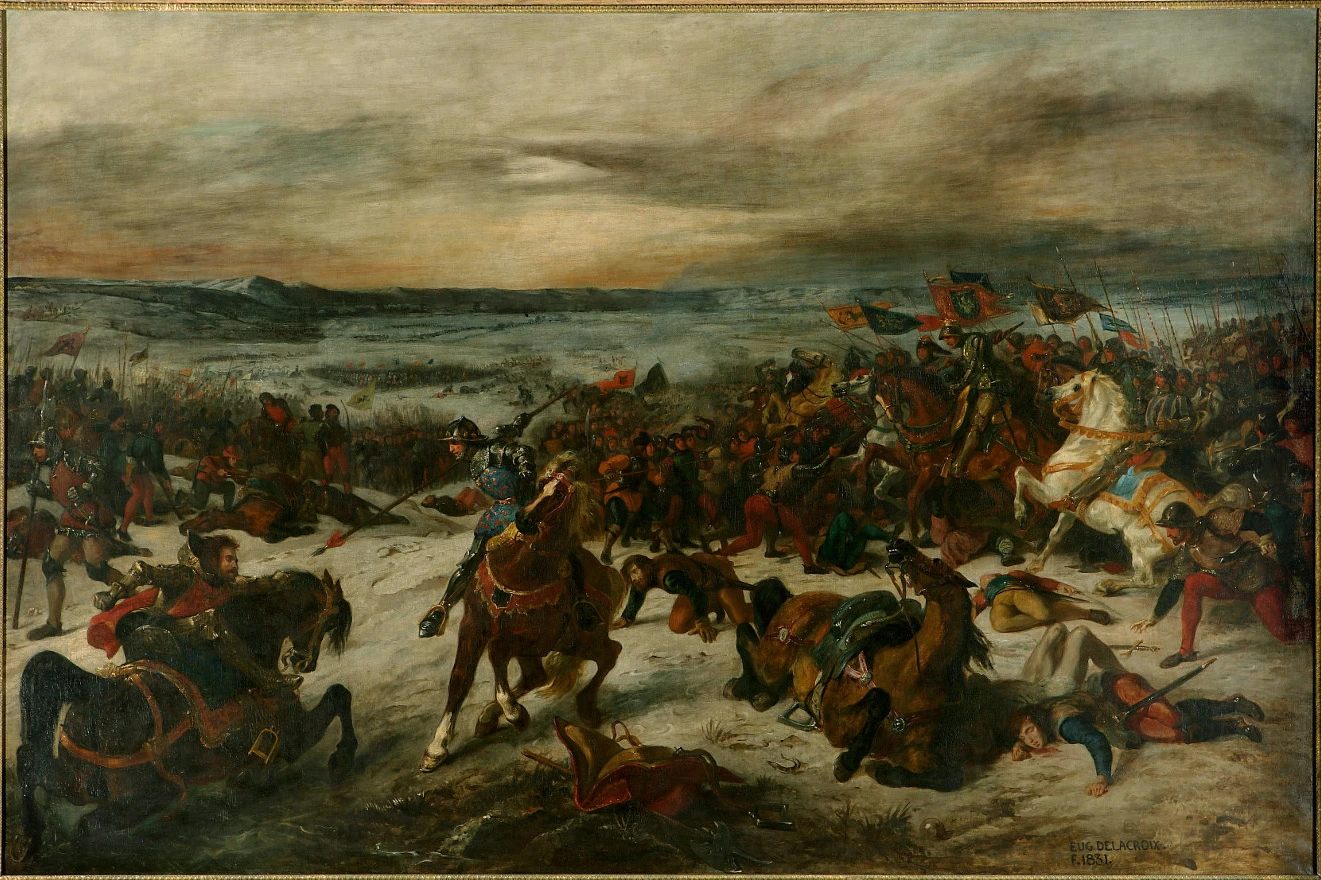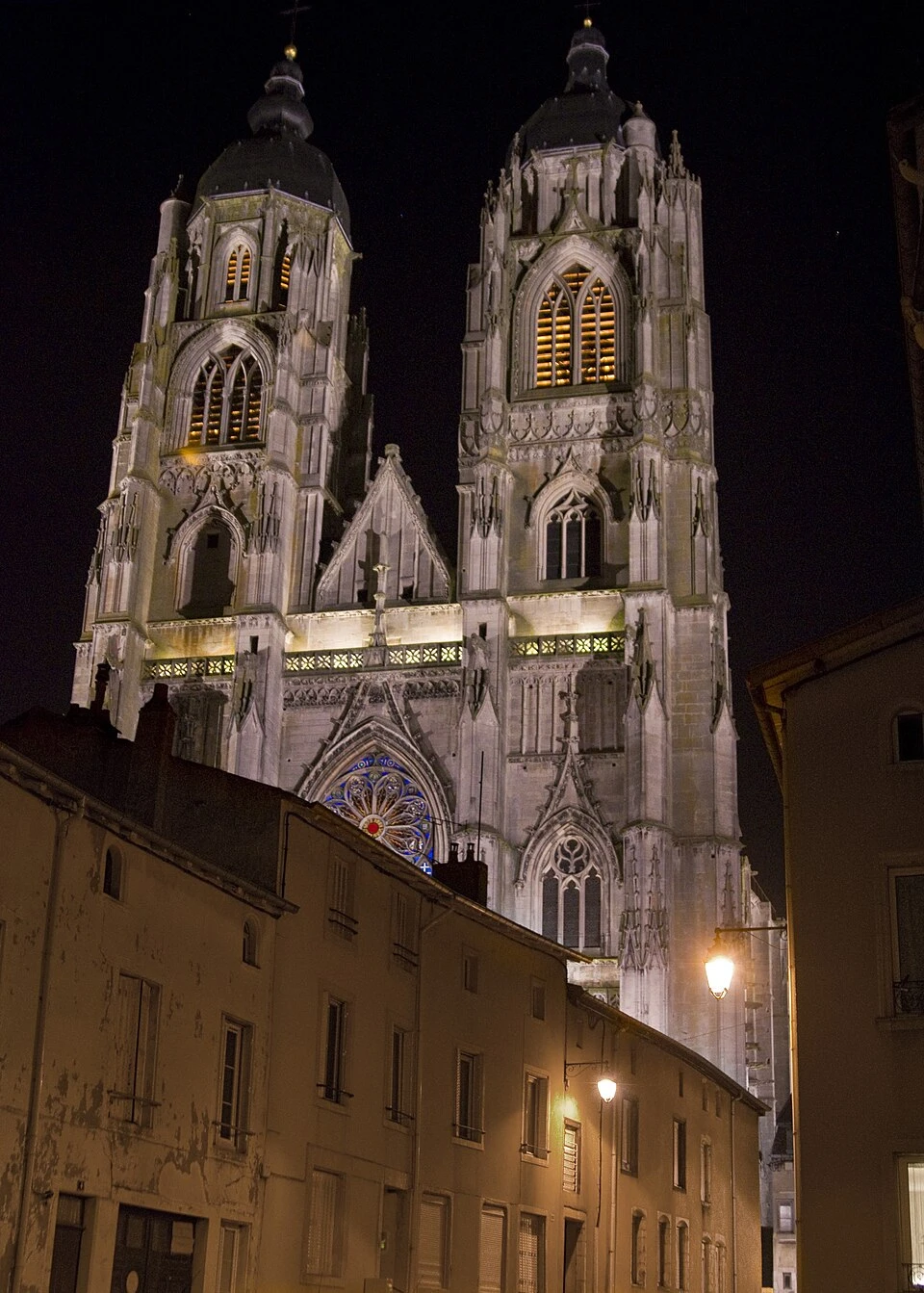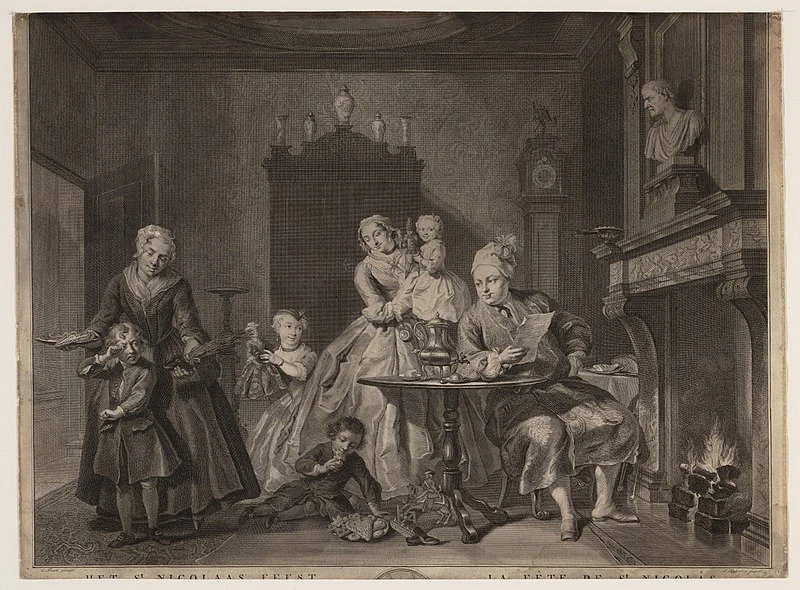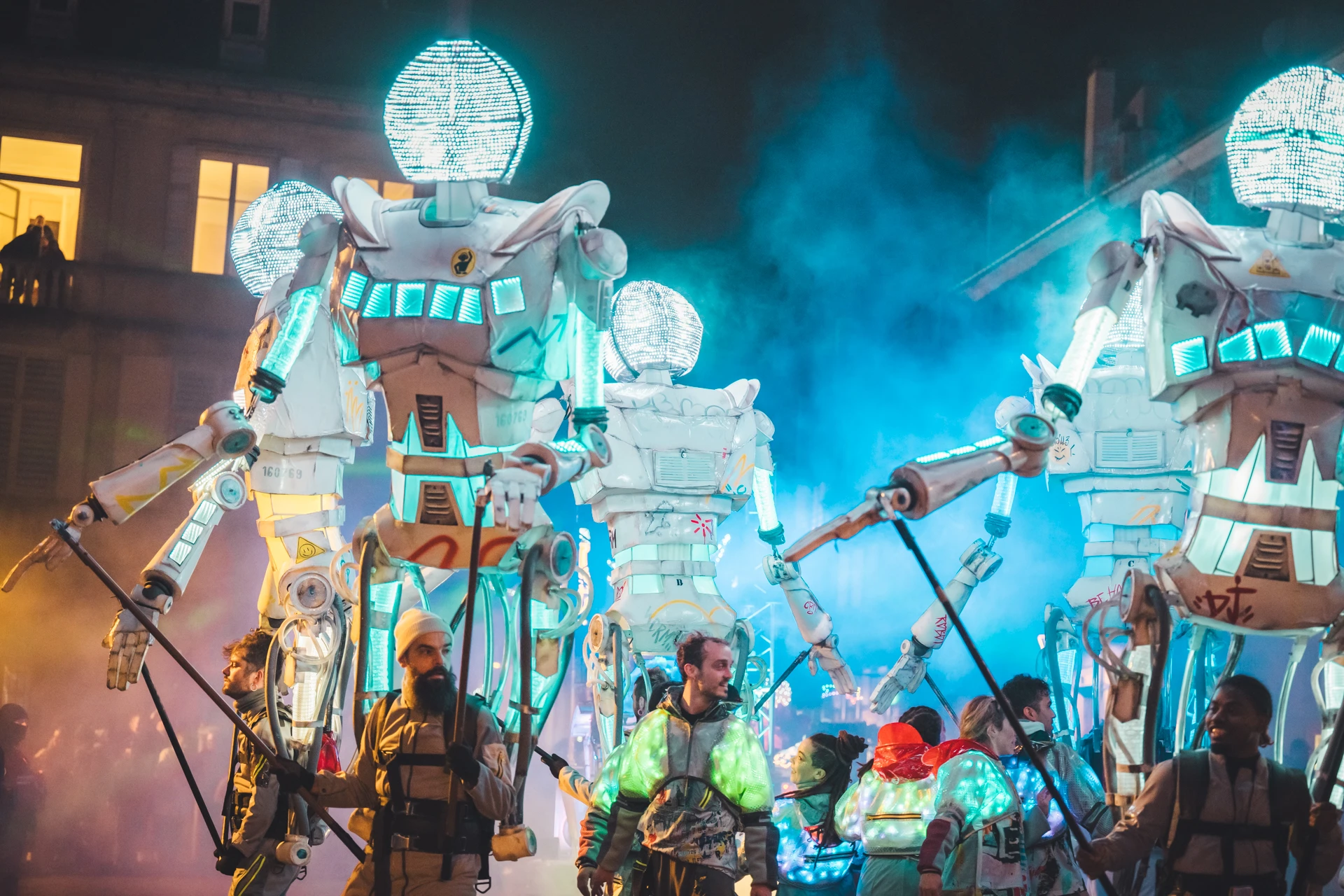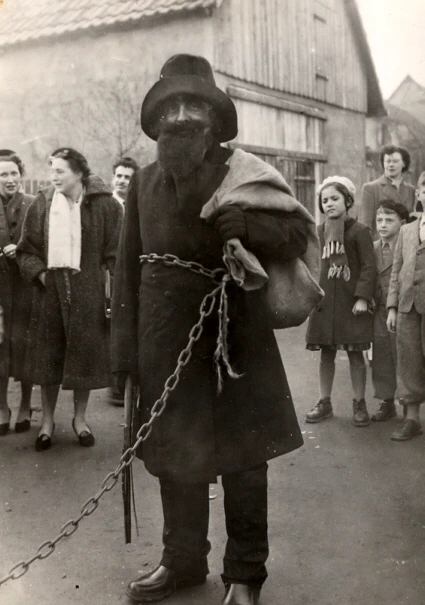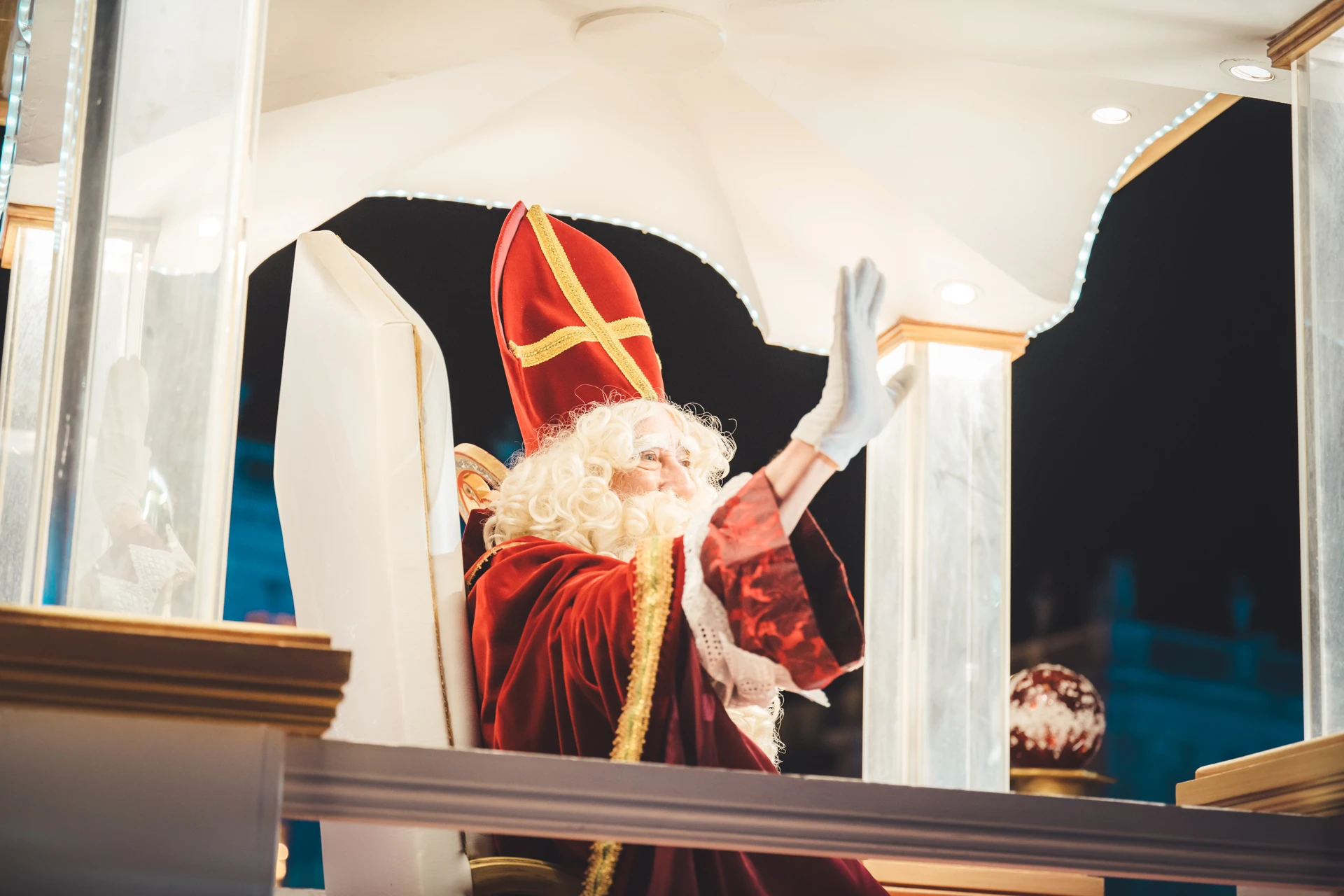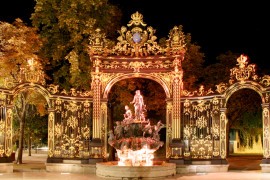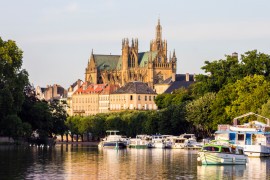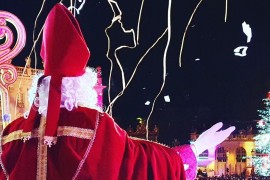The medieval origins of Saint Nicholas in Lorraine
It all began in the 11th century, when Lorraine welcomed a major relic of Saint Nicholas. This arrival marked the beginning of a significant pilgrimage that transformed the village of Port into an essential spiritual destination. The presence of this relic attracted the faithful, travelers, and, later, historical figures such as Joan of Arc. It was this first step that permanently anchored Saint Nicholas in the heart of Lorraine's identity.
Saint-Nicolas-de-Port and the relic of Saint Nicholas
The Basilica of Saint Nicolas de Port today. It is the third place of worship built for the relics of Saint Nicholas. Photo chosen by Monsieur de France: By Antoine Taveneaux — Own work, CC BY-SA 3.0, https://commons.wikimedia.org/w/index.php?curid=4237272
In 1098, a man from Lorraine named Aubert de Varangéville was staying in Bari, Italy, where the body of Saint Nicholas had recently been brought from Myra by Italian sailors to prevent it from being desecrated by the Turks who were conquering the area around Myra. The body was placed in a tomb (where it still remains today). It was from this tomb that the Lord of Varangéville stole a "phalange from the blessing hand" of Saint Nicholas. When it reached the village of Port, very close to the fiefdom of Aubert de Varangéville,the relic of Saint Nicholas became famous and the object of a pilgrimage, which led to the construction of a church in the village of Port, which became Saint-Nicolas-de-Port. This church is a very important place of pilgrimage. Joan of Arc, in particular, came here to pray before leaving Lorraine and setting off for Chinon to meet Charles VII.
The Basilica of Saint Nicholas in Bari, where the body of Saint Nicholas is kept. It was here that Aubert de Varangéville took the phalanx. Interestingly, in Bari too, a procession takes place every year to celebrate Saint Nicholas' arrival... By boat, since his body arrived on a ship belonging to Italian merchants who went to collect it from what is now Turkey. Photo chosen by monsieurdefrance.com: MeloDphoto via depositphotos.
Miracles, legends, and protection of the people of Lorraine
Lorraine tales attribute several miracles to Saint Nicholas, reinforcing his status as protector. The most famous story is that of the Lord of Rechicourt, who was miraculously freed from a Turkish prison in the 13th century. These tales, passed down from generation to generation, fuel the belief that Saint Nicholas personally watches over Lorraine.
The Miracle of the Lord of Rechicourt
Later, another man from Lorraine, Cunon de Linange, Lord of Rechicourt, was taken prisoner by the Turks during the Sixth Crusade around the year 1240. Locked in a dungeon and on the eve of his execution, he prayed to Saint Nicholas to deliver him. In his sleep, he was transported to the church of Saint Nicholas in Port, in front of which he awoke, his chains broken and lying at his feet. To thank Saint Nicholas, Cunon de Linange vowed that a procession would take place every year on December 6 to thank Saint Nicholas. This procession still exists today. It is the major religious event in Lorraine, and thousands gather with candles in hand around the relics of Saint Nicholas (the famous phalanx) in the Basilica of Saint-Nicolas-De-Port to pray to Saint Nicholas with a song, the lyrics of which are as follows: "Saint Nicholas, your reputation from age to age has showered us with your sovereign blessings. Come, cover once again with your sweet patronage, your old friends, the children of Lorraine."
The annual procession of Saint Nicholas in Saint Nicolas de Port is a moment of intense emotion / Photo chosen by Monsieur de France:
“René II: the Battle of Nancy and the vow to Saint Nicholas
The Battle of Nancy painted by Delacroix in 1831. Illustration chosen by monsieurdefrance: Nancy Museum of Fine Arts.
In 1477, René II, Duke of Lorraine and Bar, prepared to do battle against Charles the Bold, Duke of Burgundy, who was laying siege to Nancy, capital of the Duchy of Lorraine. Charles the Bold was one of the greatest military leaders of his time and commanded a very large army, leaving René II with little chance of victory. On the eve of the battle, January 4, 1477, René II stopped at the Church of Saint Nicholas and vowed to dedicate Lorraine to Saint Nicholas if he won the battle. The next day, January 5, 1477, during the Battle of Nancy, Charles the Bold was defeated and killed, and his army was routed. Keeping his word, the victorious René II decided to destroy the old church and build the current Basilica of Saint Nicolas de Port. Over time, Saint Nicolas became the patron saint of the Dukes of Lorraine, then of Lorraine as a whole.
The Basilica of Saint Nicolas de Port in Lorraine. Photo selected by Monsieurdefrance.com: By Antoine Taveneaux — Own work, CC BY-SA 3.0, https://commons.wikimedia.org/w/index.php?curid=4237272
And perhaps even a miracle in the 20th century:
The chronicle tells us that while the Swedes were ravaging the city on November 5, 1635, and almost all of the inhabitants were being massacred, a pillar of the basilica opened up to shelter and protect one of the priests of the sanctuary. Much more recently, Camille Croué-Friedman, a native of Port-au-Prince who made her fortune in America, was on a cruise when the sea became rough. As the ship began to sink, Camille Croué-Friedman, remembering that Saint Nicholas was the patron saint of sailors, prayed to Saint Nicholas to save the ship. The storm subsided, and in 1981, Madame Croué Friedman kept her word by bequeathing part of her fortune ($1,000,000) for the maintenance and preservation of the sanctuary of Saint Nicholas in Lorraine.
Saint Nicholas Day: a tradition still alive in Lorraine
Saint Nicholas has long held a special place in the hearts of the people of Lorraine. It is unclear when exactly the tradition of giving gifts on Saint Nicholas Day began. What is certain is that it is a very important family celebration in Lorraine, and people from the region often return to their hometowns on this day. Children are given sweets, sometimes small gifts, and until recently this was the only time of year when gifts were given, before Christmas eventually became established. The best evidence of the age of the tradition is a rather moving painting that can be seen in Vienna. In this painting, by Marie Christine of Habsburg-Lorraine, we see François de Lorraine, born in Lunéville and husband of Marie Thérèse of Austria, on a Saint Nicholas morning with his children unwrapping their gifts. Among them, we can see the young Marie Antoinette as a child playing with a doll.
Engraving inspired by Marie Christine of Habsburg-Lorraine's drawing depicting her family on Saint Nicholas Day. Illustration chosen by monsieurdefrance.Com: Marie Antoinette's boudoir.
Saint Nicholas Day today in Lorraine
Saint Nicholas greets the crowd at the end of the parade / Photo chosen by Monsieur de France: Jérôme Prod'homme
In any case, it's impossible to imagine not celebrating Saint Nicholas Day when you're from Lorraine. With parades and small gifts, it's a day for family and childhood memories, and the people of Lorraine hold it very dear! Parades take place on the weekends closest to Saint Nicholas Day or on December 6, his feast day, when it falls on a Saturday or Sunday. These parades are magnificent, especially in Nancy, which offers the most spectacular parade, in Epinal, which offers the longest parade with 59 floats along the banks of the Moselle, and in Saint-Dié-des-Vosges, Toul, Lunéville, and Pont-à-Mousson, which are also impressive. But Saint Nicholas goes everywhere! Even to small villages.
The 2024 parade / Photo Pierre Defontaine / ARTGE
Why is Saint Nicholas with Père Fouettard?
He is always seen accompanied by Père Fouettard, his exact opposite, a villain who punishes children who have not been well-behaved. It is said that he was born during the Siege of Metz by Charles V in 1552. To mock their enemy, the people of Metz made a kind of scarecrow with a shaggy beard, which they waved above their doors. In any case, the presence of Père Fouettard is a symbol that is very useful to children, and this may also be why Saint Nicholas is still so popular today. Saint Nicholas represents good and light, while Père Fouettard represents evil and darkness. The two walk together, and we spend our lives choosing between good and evil, but good is always rewarded (Saint Nicholas is handsome and gives out candy) and evil is always hated (like Père Fouettard).
Hans Trapp, the bogeyman of Alsace, where Saint Nicholas is also celebrated By Almanach de Wintzenheim - knarf.info, CC BY-SA 3.0, https://commons.wikimedia.org/w/index.php?curid=1489826
What is the origin of the legend of the butcher?
There is also the butcher, who is booed loudly. Why? Read on to find out.
What is the legend of Saint Nicholas?

Saint Nicholas figurines: Photo chosen by Monsieur de France: By Jean-Pol GRANDMONT — Personal photograph, CC BY 3.0, https://commons.wikimedia.org/w/index.php?curid=30372579
Over time, Saint Nicholas became THE Saint Nicholas, a protector of children, rewarding them with candy or gifts when they had been good. And if he is so loved and celebrated, it is because of a legend attributed to him. Here is the 19th-century version still known to the children of Lorraine today:
There were three little children
Who went out to glean in the fields
So many went, so many came
That by evening they were lost.
They went to the butcher's: Butcher, would you give us shelter? Come in, come in, little children, There's plenty of room, for sure.
No sooner had they entered
Than the butcher killed them,
Cut them into little pieces
And put them in the salting tub like pigs.
Saint Nicholas, after seven years, Came to pass through this field, Went to knock on the butcher's door: Butcher, would you give me lodging?
Come in, come in, Saint Nicholas, There's plenty of room, no shortage of it. No sooner had he entered than he asked for supper. Would you like a piece of ham? I don't want any, it's no good.
Would you like a piece of veal?
I don't want any, it's not nice.
I want some salted pork,
That's been in the salting tub for seven years.
When the butcher heard that,
He ran out the door.
Butcher, butcher, don't run away, Repent, and God will forgive you. Saint Nicholas went and sat down On the edge of his salting tub.
Little children sleeping there, I am Saint Nicholas. And the saint stretched out three fingers, And the three little ones all got up.
The first said, "I slept well." The second said, "Me too." And the third replied, "I thought I was in heaven."
Saint Nicholas is also celebrated with songs learned at school or at home. Ask the children of Lorraine, and they will sing them for you.
Saint Nicholas in his parade / Photo chosen by Monsieur de France: Pierre Defontaines ARTGE
FAQ for International Visitors – Saint Nicholas in Lorraine
Who is Saint Nicholas in Lorraine?
Saint Nicholas is the historical patron saint of Lorraine, celebrated since the Middle Ages. He is honoured for miracles, protection and a living tradition that still shapes the region today.
Is Saint Nicholas the same as Santa Claus?
No. Saint Nicholas existed centuries before Santa Claus and directly inspired him through European traditions such as the Dutch Sinterklaas.
Lorraine preserves one of the oldest and most authentic forms of this celebration.
Why is Saint Nicholas important in Lorraine?
Because a major relic of the saint arrived here in 1098, creating a major pilgrimage site and strengthening devotion through legends, miracles and historical vows.
Where is the best place to experience Saint Nicholas in Lorraine?
It depends on what you want to discover:
-
Nancy offers the most spectacular parade in the region, with music, floats, lights and tens of thousands of spectators.
-
Saint-Nicolas-de-Port is the religious and historical heart of the tradition, home to the saint’s relic and a moving candlelit procession.
-
Smaller towns and villages offer charming, authentic local celebrations.
Can tourists attend the candlelit procession in Saint-Nicolas-de-Port?
Yes. Visitors are very welcome. Thousands gather inside the basilica with candles in a deeply moving and centuries-old ceremony.
Why is Père Fouettard (Father Whipper) part of the celebration?
He symbolises the opposite of Saint Nicholas. Where Saint Nicholas rewards good behaviour, Père Fouettard personifies punishment for mischief.
This moral duality later influenced Santa Claus traditions.
What sweets or foods are linked to the celebration?
Gingerbread shaped like Saint Nicholas, chocolates, mandarins and small gifts. Many bakeries also create seasonal treats.
Is the celebration suitable for children and families?
Yes. It is one of Lorraine’s most joyful and family-friendly events, with lights, costumes, music and gifts.
When should I visit Lorraine for Saint Nicholas celebrations?
The first weekend of December is ideal, especially for:
-
the huge parade in Nancy,
-
the candle procession in Saint-Nicolas-de-Port.
Events also take place from late November to early December.
How do I reach Nancy or Saint-Nicolas-de-Port?
Nancy is 1h40 from Paris by train. Saint-Nicolas-de-Port is easily reached by regional train or a 20-minute drive from Nancy.

